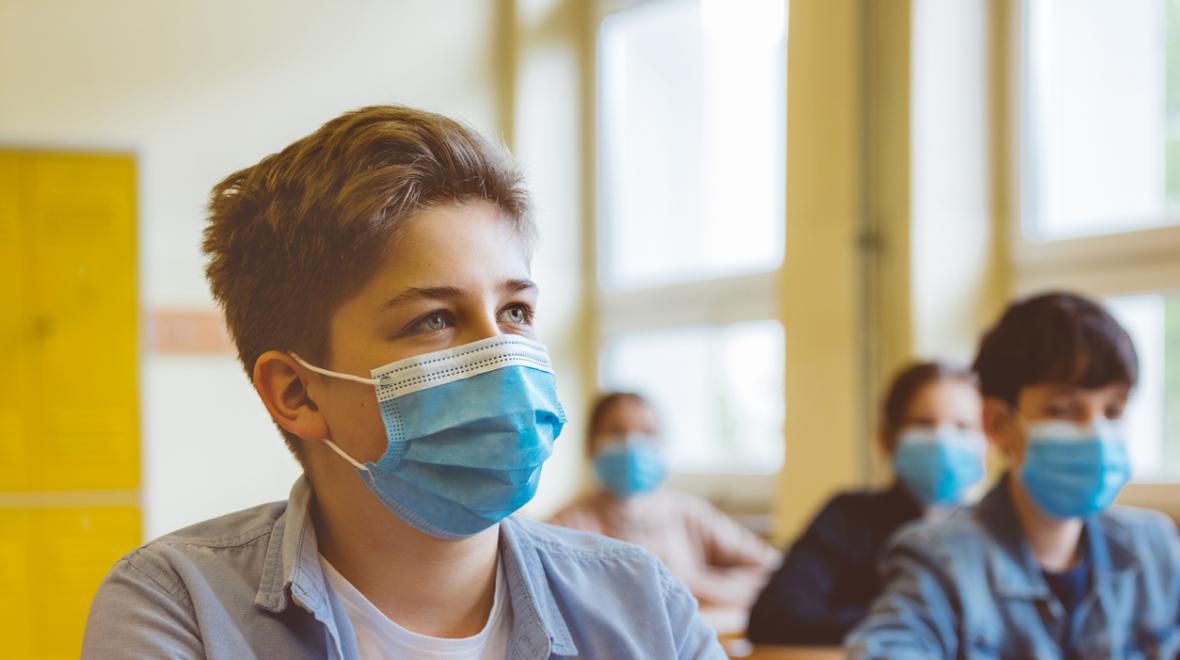
I snapped at a student the other day.
After 15 years in the classroom, I am well aware that my acerbic tone was counterproductive. Usually, I can keep frustration at bay, because I genuinely like and respect teenagers. I typically have extra reserves of patience just for them.
This year, my patience is sapped out.
And it’s not the only thing missing. My timing is off during lectures. My classroom routines still feel up in the air. Examples that used to lead to “ah-ha!” moments are met with blank stares, and classroom management techniques that have worked for years … suddenly don’t.
After months of online teaching, I was desperate to get back into the classroom. So, why am I snapping and struggling?
“Imagine you are training for a marathon,” an older, wiser colleague suggested. (Knowing I’m a runner, he explained this using my interests as an example — the mark of a master teacher.)
“Right before the race, you get injured and have to stop running,” he continues. “And then 18 months later, after zero training, you are suddenly expected to race those 26.2 miles.”
“Ooohhh,” I said. “I’m just out of shape.”
Students are out of shape, too
Getting back in shape is hard and exhausting, but it’s also temporary. I’m hoping this running metaphor will hold true. I’m hoping that in a few weeks or months, I’ll remember how to teach and my students will remember how to learn in a classroom.
Because I’m not the only one who forgot how to act in school.
According to the New York Times article Why Kids May Be Melting Down at School, students across the nation are also out of shape. The article describes an uptick in the types of student fights, vandalism, apathy and discipline problems that I am seeing in my own class and school as well.
This isn’t a surprise. Teachers were fully expecting students to be academically and socially behind. And indeed, they are.
Behaviors I remember from my days teaching middle school have shown up in my sophomore classes. (My least favorite: Students who purposefully break their mechanical pencils and then gleefully claim they are unable to work.) As the Times article rightly points out, students have a lot of valid reasons for struggling. They are dealing with the emotional toll of the pandemic. Many didn’t learn academic skills last year, making this year harder. Students are struggling with record levels of anxiety and depression. A staggering number have had a family member die. TikTok challenges urging students to destroy bathrooms and nasty public debates about wearing masks in schools certainly don’t help either.
Schools are out of shape, too
In addition to all of this, schools themselves are struggling. Staffing shortages, which are being seen in nearly every industry in the United States, are affecting schools as well.
Luckily, teachers in Washington state are relatively well paid, so we aren’t suffering from the massive teacher shortages that other areas of the country are experiencing. However, teachers alone can’t run a school. A lack of bus drivers and cafeteria workers has forced the cancelation of bus routes and lunch options. A dearth of substitutes means that teachers and counselors are covering each other’s classes during the minutes that are supposed to be set aside for planning and grading.
Principals and school administrators are also being pulled from their normal roles to work as custodians, crossing guards and contract tracers. Enforcing the proper wearing of masks has become a time-consuming discipline issue, so other concerns are going unchecked. Serious incidents such as drug use and weapons at school used to be major topics of concern. Now, they are just additional problems that no one has the time or resources to adequately deal with.
Health protocols are also resulting in long stretches of student absences. There are strict guidelines on returning to school after minor colds, and many students have been required to quarantine for multiple days due to possible exposure to the coronavirus.
Just like an injury can derail a runner, this lack of consistency is tough on students, particularly if they don’t keep up on their classwork at home. Often, students return from quarantine to discover they are now failing every class. Acting out or apathy often follows such a realization.
Adjusting from a lack of academic rigor
Last year, as record numbers of students failed classes, teachers were urged to be flexible. We accepted late work and dialed back expectations to the bare minimum.
This was not particularly successful. Perhaps it was a bit naïve to assume that adjusting academic expectations would really help students who have serious problems with depression or need direct teacher support to complete any work at all.
But yet, when school started in September, we were again urged to start slow. We were urged to rethink strict grading policies and to spend time getting to know our students before racing into algebraic proofs and essays.
But what if reading essays and conferencing with students about their work is how you get to know your students? What if meeting high expectations was the thing that previously instilled students with confidence? What if clear deadlines provided much-needed structure?
Students reported that online school didn’t feel “real,” making it easier to disengage. Even though they are back in the building this year, there still seems to be a misperception of reality. When I asked if school was easier this year as compared to pre-pandemic times, students who are failing every class reported, “Yes! School is so much easier now!” There still seems to be a disconnect.
I’m not sure if returning to the rigor of pre-pandemic classes is the answer, but academic rigor and student behavior cannot be separated. Just as some students will descend into apathy if schoolwork is too overwhelming, the opposite is also harmful. A lack of engaging, purposeful classwork also causes students to act out or disengage.
Getting back in shape
So, students are coming back to school with a new and challenging set of problems at the very same time when teachers are relearning classroom skills, counselors are having to work as substitute teachers, and school administrators are wrapped up in COVID-19 mitigation.
But those first few weeks of marathon training are always the hardest. Sometimes I struggle through a 4-mile run and it seems like I’ll never get back to 15-mile mornings on the Burke-Gilman Trail.
But I always do.
And I’ll get back into teaching shape, too. I’ll remember that sixth-period students should never choose their own seats. I’ll learn what makes that shy kid smile (under his mask). I’ll sit down and joke with the rowdy table in the back of the room. I’ll remember how to teach.
But in the meantime, I’ll keep struggling and try to keep from snapping at anyone else.
As for my student, I’d worried all night about my reaction from that day, feeling guilty about snapping at him. I was anxious to apologize in the morning.
But the next day at school, I learned that he’d been exposed to the coronavirus and was under quarantine at home. My apology would have to wait 14 days.
Hopefully, he’ll return to a more patient teacher.











